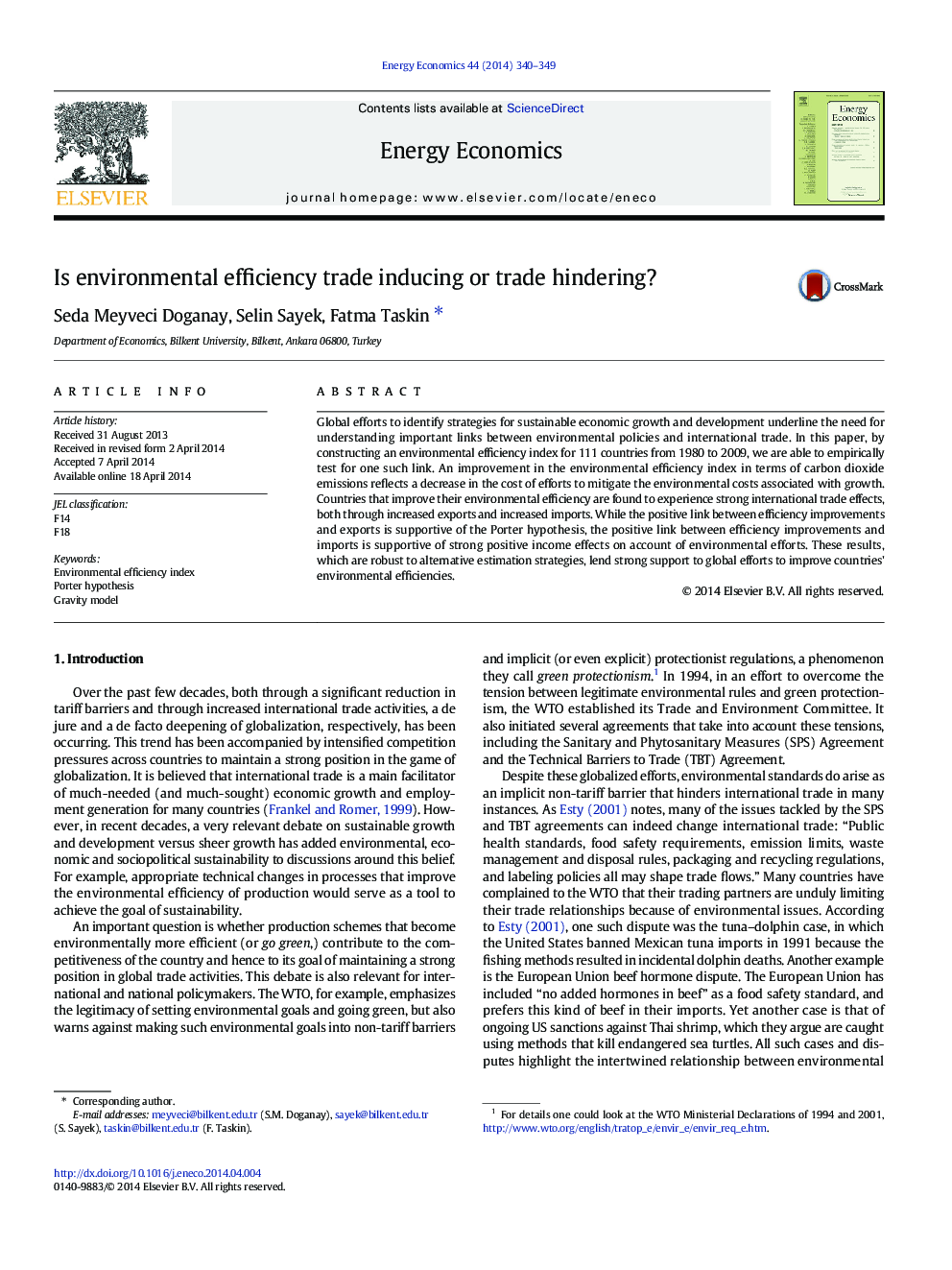| کد مقاله | کد نشریه | سال انتشار | مقاله انگلیسی | نسخه تمام متن |
|---|---|---|---|---|
| 5064620 | 1476719 | 2014 | 10 صفحه PDF | دانلود رایگان |
- We construct an environmental efficiency index for 111 countries for 1980-2009.
- The link between environmental efficiency improvements and international trade in a gravity model of trade.
- The increase in environmental efficiency positively contribute to international linkages through both increased exports and as well as imports.
- The positive link between efficiency improvements and exports is supportive of the Porter hypothesis.
- The findings also provide strong support to global multilateral environmental efforts.
Global efforts to identify strategies for sustainable economic growth and development underline the need for understanding important links between environmental policies and international trade. In this paper, by constructing an environmental efficiency index for 111 countries from 1980 to 2009, we are able to empirically test for one such link. An improvement in the environmental efficiency index in terms of carbon dioxide emissions reflects a decrease in the cost of efforts to mitigate the environmental costs associated with growth. Countries that improve their environmental efficiency are found to experience strong international trade effects, both through increased exports and increased imports. While the positive link between efficiency improvements and exports is supportive of the Porter hypothesis, the positive link between efficiency improvements and imports is supportive of strong positive income effects on account of environmental efforts. These results, which are robust to alternative estimation strategies, lend strong support to global efforts to improve countries' environmental efficiencies.
Journal: Energy Economics - Volume 44, July 2014, Pages 340-349
